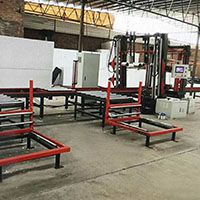
News
How polystyrene are produced from?
Polystyrene, a material most of us encounter on a daily basis, is indeed derived from petroleum. It's one of those things we might not think about too much, but the origin of polystyrene is actually pretty interesting. Essentially, it starts as a liquid hydrocarbon called styrene, which is extracted from petroleum or natural gas. Through a process called polymerization, these styrene molecules link together to form the solid plastic we know as polystyrene.
This material is everywhere—think foam cups, packaging materials, and even insulation. It's lightweight, versatile, and inexpensive to produce, which is why it's so widely used. However, because it's petroleum-based, its production and disposal raise environmental concerns. Petroleum is a finite resource, and polystyrene isn't biodegradable, meaning it can stick around in the environment for a long time.
While alternatives like biodegradable plastics are being developed, polystyrene remains a staple in many industries. So the next time you grab a foam takeout container or see packing peanuts, remember—they all trace back to petroleum!
Product Category
Hot Items
 Foam Dedusting Crusher - EPS De dust machine
Foam Dedusting Crusher - EPS De dust machine New EPS Styrofoam Densifier Melts without Pre-heating Time
New EPS Styrofoam Densifier Melts without Pre-heating Time EPS pelletizing machine - strand die works without filtering screen
EPS pelletizing machine - strand die works without filtering screen CNC hot wire 2D cutting machine with wire oscillation
CNC hot wire 2D cutting machine with wire oscillation hot wire CNC foam cutting machine with turntable for 2D/3D/4D models
hot wire CNC foam cutting machine with turntable for 2D/3D/4D models full automatic and continuous eps cutting line
full automatic and continuous eps cutting line
Live Help
 0086 13833131292
0086 13833131292 0086 311 86558425
0086 311 86558425
 English
English Espanol
Espanol Arabic
Arabic


